Suppose you’re lucky enough to have a piece of vintage cast iron made by the Sidney Hollow Ware Company. Then you have ironware from the 19th century of history in your hands. Amazingly, you can find old Sidney skillets at Estate sales, antique auctions, online, and thrift stores for a relatively small price.
I have a few Sidney Hollowware skillets, which are excellent to use. Sidney cast iron has smooth cooking surfaces like other vintage cast iron cookware. And the ironware tends to be lighter than modern cast iron.
Table of Contents
- Company Information
- How the Sidney Hollow Ware Company Started
- Company Setback
- Growth of the Casting Works
- Introduction of Cast Iron Cookware
- Wagner Buyout
- Final Thoughts
Company Information
Foundry Name | Sidney Hollow Ware Co. |
Location | Sidney, Shelby County, Ohio (hollowware production) |
Founder | Philip Smith |
Manufacture Period | Operational between 1886-1897 (Sold to Wagner Manufacturing Company) |
Product Line | The company produced a small selection of hollowware such as kettles, Griddles, Scotch bowls, and waffle irons. |
Branded As: | Sidney, Sidney Hollowware Co., Sidney |
| Characteristics | Sidney Hollowware cast iron tends to be very light even when comparing the company to other vintage cast iron by different manufacturers. |
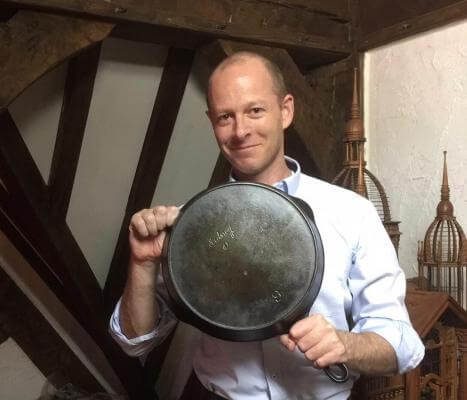
Learn The History And Timeline Of The Sidney Hollow Ware Co.
Smith Rolled The Dice And Took A Chance.
Like many businesses back in the day, it all started with one person packing up everything and rolling the dice. In the case of Sidney Hollowware, it was a young man named Phillip Smith.
Smith was born in Pennsylvania, but in 1859, he moved to Sidney, Ohio. Smith brought the molding knowledge from Thompson, McGregor, and Callahan Company.
Along with his brother, Phillip Smith founded P. Smith Bro. & Co. for the grand sum of $25. Phillip would later buy out his brother to what would become Sidney Hollow Ware Co.
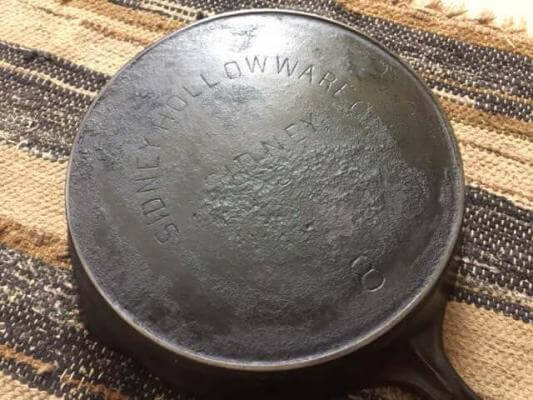
The Young Company Took On Any Work It Could To Get Established.
Like many of the early foundries, P. Smith Bro. & Co did not manufacture cookware. First, the young company took any casting work they could find. Even Griswold Manufacturing, which started as Selden & Griswold, had humble beginnings making door hinges.
Even though we know Sidney Hollowware for cast-iron cookware, the manufacture of cookware was to come later.
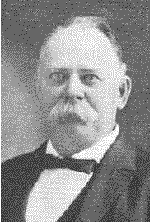
When The Future Of The Foundry Was Looking Bright, Disaster Struck.
After Smith and the company became established, the company began producing bells for churches and schools. Unfortunately, disaster struck when business picked up as a fire burned down the foundry sometime in the 1860s. Without insurance, the foundry struggled to get back on its feet. However, through sheer hard work and determination, Smith managed to rebuild.
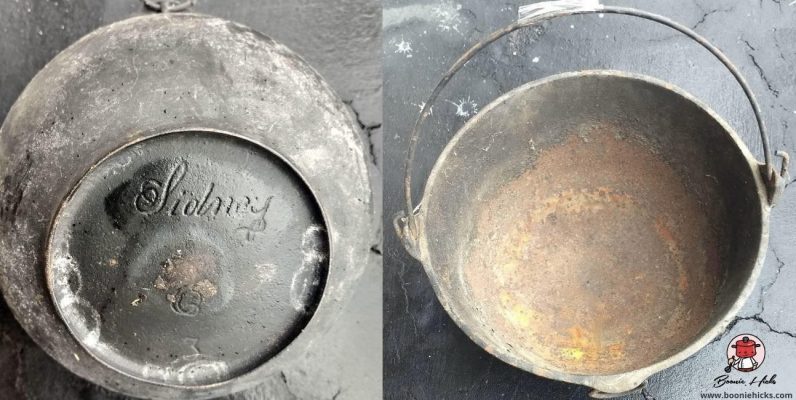
Smith Successfully Reestablished The Sidney Hollowware Company And Brought It Back To Growth.
By the 1870s, Philip Smith must have gotten back on his feet. And Smith bought out a company that was making plows. With a play straight out of modern business strategy, Smith rehired the former owner as a consultant.
As the business grew, the company undoubtedly introduced early cookware such as kettles. It produced more precision casting, such as steam engines and boilers, and was now casting many cast-iron bells. To do this, Phillip Smith must have had a great understanding of metal casting.
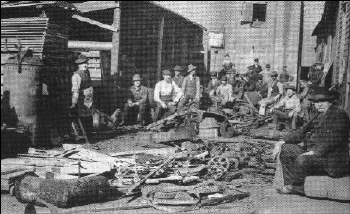
The Cookware From Sidney Hollowware.
Philip Smith proceeded to expand the business. And in 1886, he added cast iron hollowware to the product range, what we often refer to as pots and pans today. Was this when Smith introduced the name Sidney Hollowware Co. from the original name of P. Smith Bro. & Co?
Changing the company name to focus on a new product line today would seem strange. After all, Smith had worked hard to rebuild his company and was doing well. However, he might have seen the market potential and followed other foundries, sifting focus to iron cookware.
Interestingly, the script logo is considered older than the two logos. And only had the word Sidney and the letter O. There was no mention of Sidney Hollow Ware on these skillets.
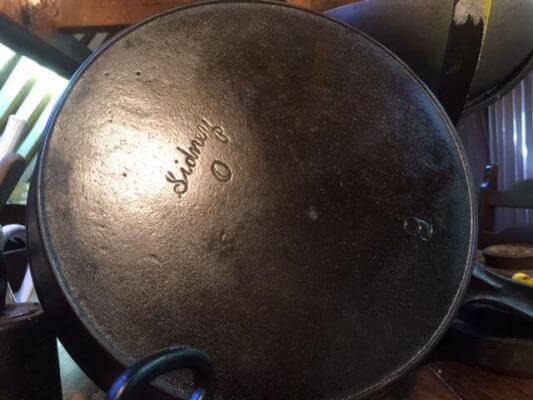
Sidney Hollow Ware May Have Started Making Spokes For Wagons But Quickly Jumped On The Cast-Iron Cookware Bandwagon Like Other Foundries.
Like many foundries during this time, the Sidney Hollowware Company may have seen an opportunity to make cookware. There was great demand from customers wanting cast-iron cookware for coal or wood ranges as many households switched from open-fire cooking to range cooking. To have an indoor range during this time must have seemed ever so modern.
Many pieces of Sidney cast iron have nickel plating. And from what I’ve seen, they must have been highly prized, with some plated skillets still in good overall condition. My Sidney skillets are incredibly smooth and machine-polished with great care.
However, the company also made cast milling machinery and copper tub wringer-washing machines. The company had to employ 20 more staff members to meet demand.
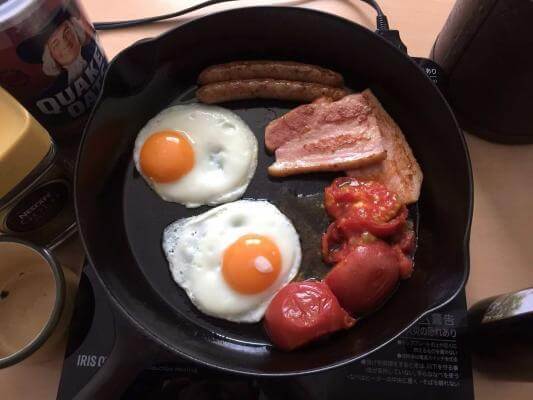
Wagner Manufacturing Buys Sidney Hollow Ware Co.
The Sidney Hollowware Company continued to do well under the leadership of Smith. However, Wagner Manufacturing bought the company in 1897. Reportedly, Wagner paid $35,000 for Sdney Holloware. Not bad, considering the initial investment was just $25.
After the takeover, Wagner Manufacturing probably produced the cast iron cookware with Sidney marking in the former Sidney Hollow Ware foundry. However, the logo is slightly different from the original logo.
Unfortunately, this often leads to misidentification between the early Sidney hollowware pieces and Wagner cast ironware.
Sidney Cast Iron By The Wagner Manufacturing Company.
Today, cast iron cookware made under the ownership of Wagner is often referred to as Wagner Made Sidney cast iron. The logo may have changed slightly, keeping the simple wording, Sidney.
However, the logo took on a Wagner cast iron skillet characteristic. It is in straight block-lettering instead of the script stylizing. The Wagner takeover brings an end to what we know as Sidney Hollow Ware under the leadership of Phillip Smith. To learn how to identify Sidney Hollowware cast iron, click here.
And if you want to learn more about early foundries, Wapak Hollow Ware also has a fascinating history. You can read all about it here.
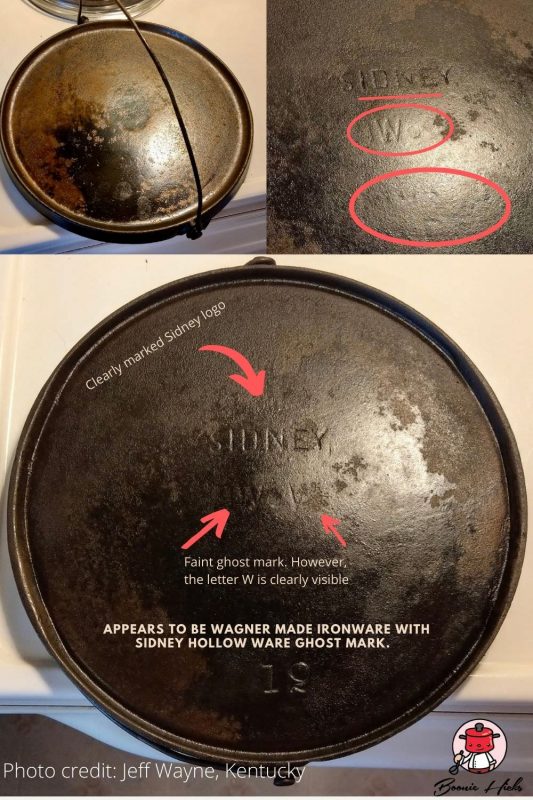
Smith Wanted His Sidney Hollowware Back.
Smith bought back Sidney Hollow Ware Co. from Wagner Manufacturing Company in 1903. I would love to know why. It was hard for Smith to give up something he poured his heart and soul into.
However, Smith did not restart the foundry; in 1907, he retired from the business. Unfortunately, this was due to health reasons. Smith and his wife traveled and contributed to the community until his passing in 1914.
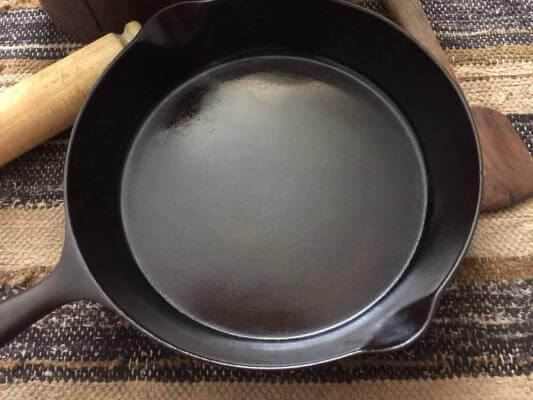
Sidney Hollowware Co. Is A Maker Of Fine Cast Iron Cookware.
The history of the Sidney Hollowware Co. is fascinating. If you are fortunate enough to have a piece of Sidney Hollowware made under the leadership of Phillip Smith, please consider yourself lucky.
Look for them in estates, garages, and online sales, where you can find various cast irons. Occasionally, Sidney skillets, griddles, and kettles come up for sale.
You do not need a Griswold if you want a great skillet. And if you are starting in the world of collecting ironware. Then, it is hard to look past Sidney Hollow Ware. However, with any antique, please research carefully before buying.


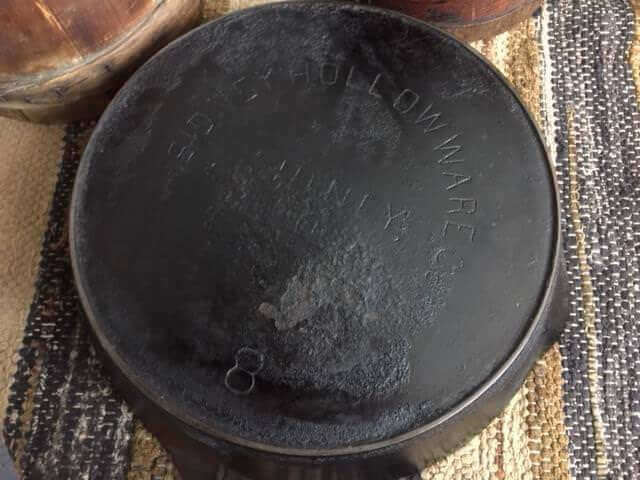
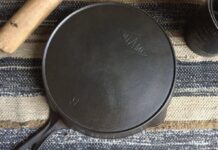
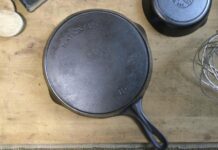
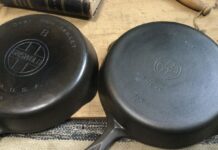



Hello, Im Becky
My mom gave me her iron skillet from which she fried chicken in every sunday. I am now 70 and mom is gone. But I still have the skillet which reads, Sidney Hollowware Co., with the 0 and its a # 7. Love this pan, use it all the time.
Hi Becky
Thanks for sharing the history of your history. It sounds like your mums frying pan is in good hands. I like these pans too, they are incredibly light.
Happy cooking
HI I have a Sidney Holloware pan bock letters Sidney O block letters. The pan is 4 1/2 ”round measurement to handle 6 1/2 ”. Is this an egg pan? Does anyone know approximate value.
Hi Mary Ann
Thanks for your contact.
The smallest Sidney Hollow Ware skillet I’ve come across is size number 6. Your skillet is decisively smaller and I’d place it in the toy or miniature category. It wasn’t unusual for foundries to make exact replicas of full sized hollowware for children to play house with. I’m not sure of the value, but I should imagine it would raise some interest on eBay if you wanted to sell it.
Cheers, hope this helps
Thank you so much for input!
Our old family skillet was used on the campfires, so it’s well caked with old debris on the bottom. I have used it for many, many years, though! It is difficult to read, but I can see WARE at the top, and SIDNEY under that. I am not seeing an O anywhere, but it could be hidden. Can you give me any information about this? Thank you!
Hi Nancy
Thanks for getting in touch.
Unfortunately, you might need to use a bit of elbow grease to uncover more of the logo beneath. You could be right, and you pan could be a vintage Sidney Hollowware. But once you uncover the logo, head over to another article on identifying Wagner Ware. That way you’ll be able to compare logos on your skillet with the two in-house resources.
Cheers Nancy
Boonie Hicks
I recently purchased a deep large oval roaster with lid. The only marks are on the lid, a cursive 7. There is a gate mark inside the lid. The handles on both the pot body and the lid are smooth half moon comfortable handles. I think it is a Wagner, can you please help me?
Best regards,
Michael Hayes
Hi there Michael thanks for the question
If you have an oval Wagner Roaster the half-moon handles may indicate an early design. Circa early 1900s.
Check your roaster in a good light for the “Wagner” marking it could be very lightly cast. I’d also check the gate mark to see if it’s vertical on the lid as another indication of a Wagner.
Hope this points you in the right direction.
My husband came across a “Sidney Hollow Ware Co”, Sidney O #9 skillet in a dumpster. The logo is right up against the rim. I’m curious it’s worth and how to safely remove the old seasoning and then reseason without risk of warping the skillet since its thinner than normal.
Hi Tabitha
Well done and what great find. Sidney Hollow Ware skillets are becoming very scarce so, your husband should be very proud. Good on him for rescuing a piece cast iron history.
Sold listings on eBay will give you an indication of the value. Two main factors which affect the value of Sidney Hollowware are:
1.Does the pan sit flat, have any warp or bow? As you know these pans are super thin and are prone to warping.
2. Condition of the logo. Some of the Sidney logos are shallow and not clear. However, from your description, your skillet has a rarer logo on an already hard to find skillet. Because your logo is near the rim of the pan, I have my fingers crossed the logo is crisp and clear.
As for seasoning, it’s a topic for much debate.
I would remove the seasoning by waiting for a nice sunny day, opening up your windows and baking the seasoning off in the oven. However, I would try to get as much crud off as I could with a Steelo scourer or SOS pad to reduce smoke. I’d recommend watching a youtube video for this method.
As for seasoning, I find simply using a pan as a vegetable roasting dish a couple of times. I find this builds a nice initial layer of seasoning. In Asia, they use vegetable scraps and have a fry up almost burning them onto the pan. Cooking nonstick food and the seasoning will build. But with Sidney’s pre-heat very slowly the cast-iron will want to move.
Hey, thanks for getting in contact and congratulations, enjoy your skillet.
I have a cast iron skillet with Sidney written in script and a #8 on bottom. There is no -O- on it anywhere. It belonged to my husband’s grandmother. She started housekeeping in early 1900’s in eastern Kentucky. Can you help?
Hi Sue
Thanks for the comment. You have a great piece of family history.
It’s fantastic your husbands grandmother used her skillet as a young lady in the early 1900’s.
Unfortunately, there is little information on the foundry and the different variations including Sidney without an 0. But they were only in operation between 1887-1898. So your family skillet was made between this time. However, the script logo is considered the older of the two logos.
Your husband’s grandmother will have a smile on her face with you researching her old skillet.
Thanks for sharing.